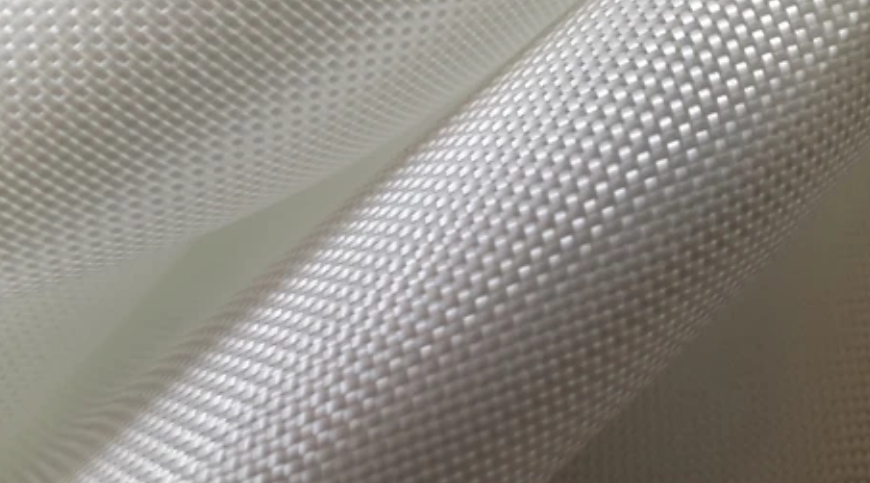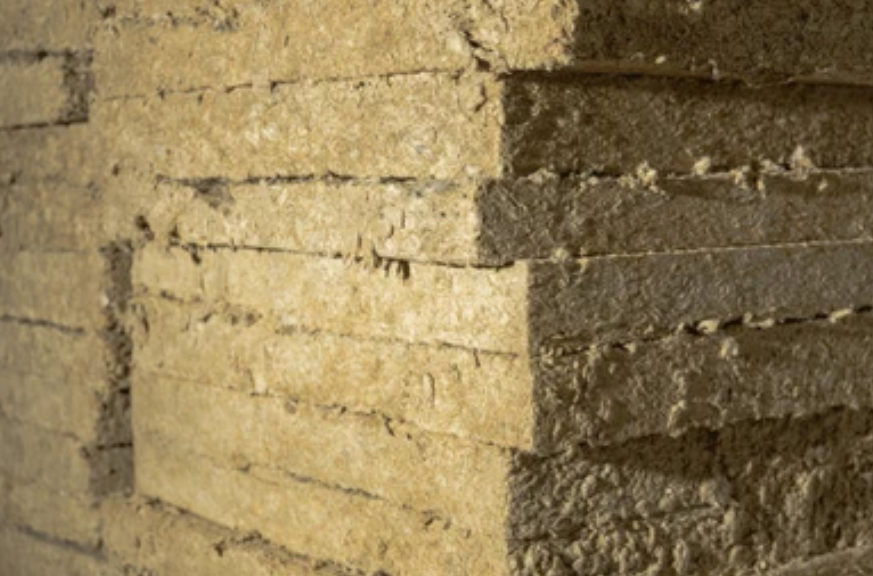No Products in the Cart

Safe Sleep: Your Fiberglass Free Mattress Guide
Like you, I consider my bedroom a personal retreat, where the day's stresses are supposed to fade away into a calming hush. But, what if the very place we lay our heads to rest was hiding a not-so-little secret that could compromise our health? Recently, I've learned about a growing concern involving mattresses that contain fiberglass in their inner covers – a component commonly used for its fire retardant qualities. This discovery launched my quest for a solution to keep our sanctuaries safe and serene. Enter the world of fiberglass free mattresses, where the promise of hypoallergenic, non-toxic bedding reigns supreme. Join me as I delve into the benefits of choosing an eco-friendly mattress, the peace of mind offered by chemical-free sleep, and the overall wellbeing that comes with incorporating organic sleep products into our lives.
Key Takeaways
Fiberglass free mattresses are pivotal for a healthy and hypoallergenic sleep zone.
Choosing non-toxic bedding is not just about comfort, but also about health and safety.
Opting for an eco-friendly mattress can significantly reduce environmental impact.
Organic sleep products are the cornerstone of chemical-free sleep and holistic wellbeing.
Assure the purity of your sleep environment by selecting a mattress free from harmful chemicals.
What Fiberglass Is?
Fiberglass, a sturdy and lightweight material, has found widespread use in various industries, notably as home fiberglass insulation. However, my own investigation into mattress manufacturing revealed that fiberglass often functions as a flame retardant within these products. Many memory foam mattresses, which are inherently flammable due to their material composition, rely on fiberglass in their inner covers to meet fire safety regulations at a lower cost.
The Risks of Fiberglass in Mattresses
As someone who values a clean and safe home environment, it's important to consider the hidden dangers that might lurk within our everyday items, including the very mattresses we sleep on. While often out of sight, the content of inner mattress covers can significantly impact our health and safety. Let's delve into what fiberglass is, how it's become a common component in many mattresses, and crucially, the risks it may pose.
The Health Dangers of Fiberglass Exposure
The promise of a safe mattress may ironically lead to exposure to fiberglass, with consequences for health and home. Fiberglass particles can escape through wear and tear or if the mattress cover is removed—against many manufacturers' advisories. This exposure poses a variety of health hazards, such as respiratory problems and skin irritation, which can be particularly severe for individuals with pre-existing conditions like asthma.
Real-Life Cases of Fiberglass Harm from Mattresses
It's alarming how many people have unknowingly faced these risks. Numerous homeowners have discovered that once fiberglass escapes from a mattress, it can contaminate nearly every corner of one's living space, leading to extensive and costly decontamination processes. I've come across stories of families who have been blindsided by the pervasive nature of fiberglass, turning their homes into itchy, inhospitable environments.
| Component | Present in Fiberglass Mattresses | Present in Chemical-Free Mattresses |
|---|---|---|
| Flame Retardant | Fiberglass | Natural fibers or silica-based solutions |
| Health Risk | Potential for skin/eye irritation and respiratory issues | Minimal; typically hypoallergenic |
| Environmental Impact | Can lead to home contamination and arduous cleanup | Safer for home environment; no known significant dangers |
| Cost | Initially affordable; potential for high clean-up costs | Slightly higher investment; reduced long-term costs |
In response to this quandary, an increasing number of people, much like myself, have started seeking out chemical-free mattresses. It's become clear that mattresses without hazardous materials not only contribute to our immediate comfort but also protect our long-term health and wellbeing.
How to find Fiberglass free mattresses?
As I navigate the world of sleep health, I've become increasingly aware of the importance of choosing a mattress free from hazardous materials. A crucial factor that defines the safety of a mattress is its composition—specifically whether it's free of fiberglass, a common yet potentially harmful fire retardant. I'm here to unveil what it truly means for a mattress to be fiberglass free, and how certain materials and certifications contribute to a safe sleep.

Materials Used in Non-Toxic Mattress Production
When I scout for a new mattress, my eyes are on the lookout for labels that showcase eco-friendly, fire retardant-free materials. These are often found in natural fiber mattresses and organic mattresses that use alternatives like silica or plant-based fibers to provide flame resistance. Ditching fiberglass not only results in a safer mattress, but also aligns with my hypoallergenic bedding preferences for a healthier sleeping experience.
Verify Mattress Contents and Certifications
Ensuring the claims of a fiberglass-free mattress cover hold true requires a little detective work on my part. Certifications like OEKO-TEX can be a green flag, confirming a mattress is free from harmful substances. But how does one verify these contents and certifications? Let's break down their significance.
| Certification | What It Signifies |
|---|---|
| OEKO-TEX® | Confirms that every component has been tested for harmful substances. It embodies consumer confidence and high product safety. |
| GreenGuard Gold | Indicates low chemical emissions, promoting healthier indoor air quality. |
| GOTS (Global Organic Textile Standard) | Verifies that the textile fibers in your mattress are organic, ethical, and sustainably harvested. |
| CertiPUR-US® | Ensures that the foam used in the mattress is free from ozone depleters, heavy metals, and formaldehyde. |
Ultimately, a deep dive into these certifications assures me that I'm investing in safe mattress alternatives. My commitment to a tranquil night's rest is matched by these certifications that safeguard my sleep sanctuary from harmful chemicals.
Decoding the Label: Spotting Fiberglass in Mattresses
When I'm on the hunt for an allergen-free sleep, I can't just take a mattress's inviting appearance at face value. That's why I've become quite the sleuth at label checking. A closer look at the tag tucked on the mattress can reveal a lot—like if I'm about to bed down with glass fiber content. Manufacturers are legally required to disclose all those tricky ingredients lest they skirt fire safety standards. Spotting something like "XX% glass fiber" on the label is basically a red flag waving at high mast.
Now, non-toxic bedding solutions rank high on my list, and they're becoming more mainstream, all thanks to our growing clamor for healthier living. Brands are now touting flame retardant materials that skip the fiberglass for safer alternatives. But here's the deal, I like to see wording like "organic sleep surface" and I'll dive deeper to ensure that the materials meet my fiberglass identification regimen.
Check the label for any mention of glass or fiberglass
Look for warnings like "Do not remove the cover"—this can be telling
Seek endorsements from trusted fire safety and organic certifications
Before I let that mattress cross my threshold, I make sure all signs point to a serene, non-toxic, and allergen-free sleep.
It's all written on the label; you just need to know the language.
The importance of using Fiberglass Free Mattress
When I think about a good night’s rest, the idea of a healthy sleep environment immediately comes to mind. I'm aware that every element counts towards that restful slumber, including the very mattress that cradles us through the night. This is precisely why I choose a fiberglass free mattress, designed to support not only sleep that revitalizes but also a lifestyle that cares for well-being and the planet.
Why Choose a Fiberglass Free Mattress?
For starters, a mattress devoid of fiberglass ensures my sleep is never compromised by concerns of skin irritation or potential respiratory issues. The non-irritating mattress materials are especially critical for those of us with sensitivity or allergies. Plus, knowing that my rest is not contributing to the environmental impact of bedding gives me peace of mind. It's comforting to reflect on how opting for fire retardant free mattress options is a small, yet significant step towards a more eco-conscious lifestyle.
Comparison with Traditional Mattresses
In contrast to traditional mattresses, which often rely on chemical fire retardants or fiberglass for fire resistance, fiberglass free mattresses employ sustainable mattress materials. Breathability is also a key feature I look for, and with a breathable mattress, I’m able to enjoy a cooler and more comfortable snooze that harmonizes with my body's natural needs.
| Feature | Fiberglass Free Mattress | Traditional Mattress |
|---|---|---|
| Material Safety | Hypoallergenic & Organic | May Contain Chemicals |
| Environmental Impact | Lower | Higher |
| Health Compatibility | Allergy Friendly & Non-Irritating | Varies; may cause irritation |
| Breathability | High; promotes air flow | Often Lower |
| Fire Retardancy | Chemical-Free Alternatives | Fiberglass or Chemicals |
No wonder I esteem my allergy friendly mattress highly — it stands as a reminder of the choices we make for health and environment. It's a daily embrace of a rest that is truly wholesome, in a sleep space that's both safe and nurturing. There's nothing quite like the assurance that comes from knowing that my sanctuary of slumber is a healthy sleep environment through and through.
Non-Toxic Flame Retardants: Safe Mattress Alternatives
As someone deeply invested in the quality of my sleep and the health of our planet, the shift towards non-toxic flame retardant solutions in mattresses is a change I welcome wholeheartedly. A healthy mattress is the cornerstone of a good night's rest, and the thought that my bed could be compromising my health used to keep me up at night—ironically. With sustainable sleep surface options now readily available, I'm thrilled to witness and endorse the evolution of fire safety in bedding that doesn't rely on potentially harmful chemicals.
I've researched various non-toxic mattress options, and it's clear that the industry is responding to consumer demands for flame retardant alternatives that don't pose a hazard to our health. Those seeking non-hazardous bedding now have more options than ever, with many companies offering eco-friendly mattresses that are just as comfortable and fire-resistant as their traditional counterparts.
Each time I lay my head to rest on my chosen eco-friendly mattress, I sigh in relief, knowing that every element, from the fibers to the foam, is contributing to a safer, greener world. By championing mattresses with natural and non-toxic flame retardants, we're not only safeguarding our health but also playing an active role in environmental stewardship—one sustainable snooze at a time.
Chemical-Free Bedding Create a Healthy Sleep Environment
When I think about a restful night's sleep, I imagine sinking into a bed cloaked in the purest layers of comfort. It's not just the mattress beneath me that sets the stage for a good night’s rest; it’s the sheets, the comforters, and every textile that touches my skin. My sanctuary is defined by a chemical-free sleep surface crafted from materials that promise a rejuvenating slumber.
Chemical-Free Sheets and Comforters support health and wellness
I make sure that my bedding choices align with my values by choosing hypoallergenic sleep products that support health and wellness. I aim for toxin-free bedding options like organic cotton or bamboo fibers which ensure my night's rest is not only comfortable but also aligned with my chemical-conscious lifestyle. These allergen-free bedding selections are crucial for maintaining my sanctuary's purity and serenity.
Organic Cotton: Known for its breathability and softness.
Bamboo: Renowned for its moisture-wicking properties and durability.
Silk: Often preferred for its natural cooling abilities and luxurious feel.
To truly revitalize during sleep, I invest in non-irritating bedding. This commitment extends to all the healthy mattress accessories that I choose, from mattress toppers to protectors. Natural bedding options are not a mere preference for me; they are a necessity for ensuring that my skin and respiratory system are greeted each night by a gentle, allergen-free embrace.
| Material | Benefits | Best for |
|---|---|---|
| Organic Latex | Organic Latex | Supportive sleep surface |
| Wool | Temperature regulating, fire-resistant | Year-round comfort |
| Hemp | Durable, sustainable, antimicrobial | Eco-conscious sleepers |
The Link Between Fiberglass and Common Mattress Allergies
As someone who values a good night's sleep, I've become increasingly aware of the importance of choosing the right materials for my bedding. I've learned that mattress allergies are often linked to the presence of fiberglass in mattresses. The tiny fibers can escape, aggravating allergies and causing discomfort. I was surprised to find just how many people are affected by this issue.
When searching for an allergen-free mattress, the choices can be overwhelming. However, the quest for a natural mattress and hypoallergenic bedding is a commitment to health and well-being. As someone who has experienced the sneezing and itching that come with poor quality mattresses, I affirm that opting for materials that don't trigger allergies can significantly improve sleep quality.
Eco-friendly mattress options without fiberglass
Embracing eco-friendly mattress options has not only alleviated my allergy concerns but also aligned with my personal environmental values. These mattresses are designed with sustainability in mind, reducing our carbon footprint and helping us take a step towards a greener future.
Through personal experience, I've realized that a concerted effort to find safe mattress alternatives is not just about better sleep; it's about creating a healthier lifestyle overall.
I encourage you to consider the long-term benefits of an allergy friendly mattress. Your future self will thank you for the nights of uninterrupted sleep and the mornings free from allergy symptoms. Sleep safe and sleep well!
Sustainable Mattress Materials and Their Benefits
As someone deeply invested in the health of both my planet and my sleep, I've taken it upon myself to explore the burgeoning world of eco-friendly bedding. The journey to discovering a sustainable mattress that mirrors my environmental ethos has been enlightening, to say the least.
My quest led me to a variety of sustainable mattress materials, each with unique benefits. For instance, organic cotton not only offers a soft, organic sleep surface but also sidesteps the large water footprint of conventional cotton production. Similarly, wool stands out for its natural temperature-regulating properties, contributing to a chemical-free bed that provides comfort year-round. Then there's latex, derived from rubber trees, which not only delivers a supportive sleep but also biodegrades naturally, thus reducing our environmental impact further.
Organic Cotton: Uses less water, is grown without harmful pesticides, ensuring a toxin-free sleep.
Wool: Naturally resistant to mold and dust mites, making it a top choice for an allergy-friendly bed.
Latex: Offers durability and comfort, outlasting synthetic materials while being eco-friendly.

Conclusion
In closing, finding an eco-friendly mattress may take a little extra effort, but it's an investment in our planet and personal well-being that undoubtedly pays off. And as more of us embrace sustainable mattress materials and support brands that prioritize our earth, we pave the way for a healthier world—one restful sleep at a time.
As someone who prioritizes health and wellness, the transition to hypoallergenic mattress options made from organic materials was a no-brainer. These mattresses are champions of a chemical-free sleep, curtailing the common issues I faced with allergens and synthetic chemicals. The thought of laying my head to rest on a mattress that subscribes to a sustainable sleep solution philosophy imparted a deep sense of relief.
My exploration led me to conclude that the essence of a good night's sleep lies in the integration of a natural fiber mattress into my sleep sanctuary. This initiation into a healthy sleep environment, free from the worries of inhaling toxins, has been transformative. I've come to learn that the quest for non-toxic bedding transcends mere preference and aligns with my core values of wellbeing and environmental stewardship. Bravo to those industry pacesetters who have recognized and answered the demand for non-toxic, breathable mattresses – they are truly partners in the pursuit of our night-time rejuvenation.
I've also come across trailblazing brands that are making waves with their eco-friendly bedding innovations. Novilla, for example, caught my eye as a brand committed to providing a multitude of environmentally responsible bedding choices. Their dedication to creating a toxin-free sleep experience without compromising on luxury or comfort sets a commendable benchmark in the industry.
FAQ
What exactly is a 'fiberglass free mattress'?
A fiberglass free mattress is one that doesn't contain any fiberglass materials, which are often used as a flame retardant in mattress production. Instead, these mattresses use alternative materials such as organic wool, rayon, or natural silica to meet fire safety standards, offering a non-toxic sleeping environment.
What benefits do non-toxic mattresses offer?
Non-toxic mattresses, like those with organic or natural materials, provide a safer sleep environment free from harmful chemicals and allergens. They benefit those with sensitivities or allergies, reduce environmental impact, and enhance overall sleep quality with breathable, confortable materials.
What kind of certifications should I look for in a safe mattress?
Look for certifications like OEKO-TEX Standard 100, GOTS (Global Organic Textile Standard), or GreenGuard Gold which ensure your mattress has been tested and approved to be free from harmful substances and safe for indoor use.
How do hypoallergenic mattresses contribute to a healthy sleep environment?
Hypoallergenic mattresses are designed to minimize the presence of allergens. They're typically made from materials that resist dust mites, pet dander, and other common allergens, helping to ensure a clean, fresh, and irritation-free sleep environment.
Can a non-toxic flame retardant offer the same level of safety as fiberglass?
Yes, there are many effective non-toxic flame retardants available that provide the necessary level of fire protection without the health risks associated with fiberglass. Materials such as silica, wool, and thistle are often used as safe, chemical-free flame retardant alternatives.
What materials are used in the production of non-toxic, hypoallergenic mattresses?
Non-toxic, hypoallergenic mattresses are made from a variety of natural materials including organic cotton, wool, latex, and sometimes innovative plant-based foams. These materials are not only gentle on your skin but also contribute to the sustainability of the product.








